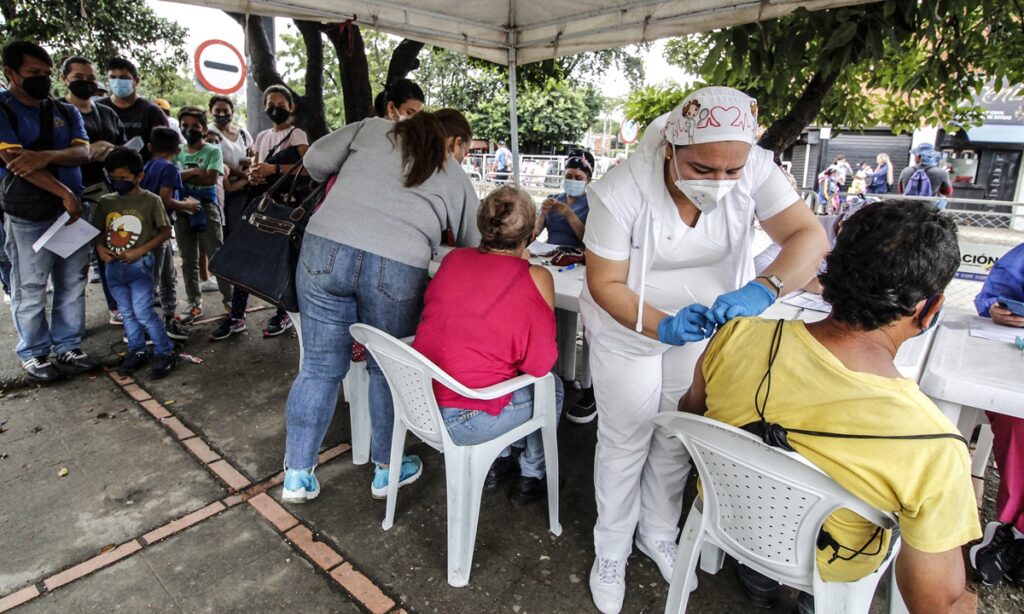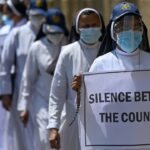Young Latin Americans see career dreams crushed in COVID-19’s wake
As a boy, Fabian Calderon would watch planes at Bogota’s airport with his father, who worked there as a flight dispatcher, a pastime that inspired him to pursue the same career.
Working by day in a sales call center, Calderon used his savings to enroll in an evening course in 2019 at a private university, paying $800 a term – equivalent to more than double his minimum monthly wage of $350.
“It was hard studying until 10 pm and going to work the next day, but I was guaranteed a good job at the end,” 29-year-old Calderon told the Thomson Reuters Foundation.
But then the COVID-19 pandemic struck, battering Colombia’s economy and with it Calderon’s dreams of graduating and securing a better future.
“I lost my job. I lasted one month without a pay check. I couldn’t pay for tuition. I felt so disappointed,” said Calderon, who dropped out in June 2020 and has not been able to afford to return since.
Millions of students in Colombia and across Latin America, have been forced to leave higher education due to the economic fallout of COVID-19, experts say.
A survey by WorkUniversity, an online jobs platform, found that higher education dropout rates rose by 24 percent in Colombia during the second quarter of 2020 from a year earlier.
More than half of students surveyed cited economic reasons for abandoning their studies.
In 2021, the Colombian government announced tuition fees would be waived for the poorest students at state universities, with about 650,000 students eligible to apply in 2022.
Higher education strides
Latin America has made big strides in getting more students into higher education over the past two decades.
Between 2000 and 2018, higher education gross enrolment rates in the region more than doubled from 21 percent to 52 percent, according to the World Bank.
But the impact of the pandemic risks undermining such progress and widening the gaps in educational opportunities between the rich and poor, especially for women.
“Before the pandemic, there was a growing trend to have more women than men in [higher education] in Latin America, as in many other countries,” said Francesc Pedro, head of the International Institute for Higher Education in Latin America and the Caribbean (IESALC), part of UN cultural agency UNESCO.
A more skilled and educated workforce helps to drive economic growth, increase social mobility and reduce inequality.
“We can already expect that there will be a major impact on the earnings of this generation. Clearly, there will be an effect on the GDP [gross domestic product] of all countries,” said Pedro.
For children, disruption to schooling stemming from months-long school closures due to the pandemic will cause a skill loss that could result in a 1.5 percent drop in global economic output for the rest of this century, the Organisation for Economic Co-operation and Development (OECD) estimates.
Gender inequality
In Latin America, female students will be hardest hit.
“We certainly expect less women to come back to universities … the gender issue is an indicator of social and economic inequalities from which women suffer more in our region,” Pedro said.
Before the pandemic reached Colombia in March 2020, Daniela Acevedo, 24, had just six months to go before completing a technical degree in health administration at a free government-run training college.
Acevedo’s father gave her the $5 daily bus fare, but as businesses closed because of the months-long lockdown, he lost his job as a construction worker and could no longer afford it.
“I walked half the way to save on bus fares and sold sweets in class. But I couldn’t hold out,” said Acevedo.
“I had to stop studying. It was heartbreaking. All that effort and time, nearly two years, wasted. I didn’t get the certificate. I have nothing to show at job interviews.”
When classes went online, Acevedo could not study from home because she does not have a computer or internet.
Many low-income students have faced similar problems, making it difficult for them not to fall behind or drop out altogether.
“I fell into a depression. I felt worthless and useless,” said Acevedo.
By earning a certificate, Acevedo had hoped to apply for a hospital administrator job and earn just above the monthly minimum wage of $300.
It could have been a chance to lift herself out of poverty and stop her slipping into the huge pool of informal workers, who toil for daily cash-in-hand across Latin America.
Now, Acevedo is looking for work as a waitress or cleaner to earn about $5 a day.
“It’s not what I wanted for myself. I had wanted a career, a stable job. I’ll have to start from zero,” she said.
A similar pattern has unfolded in neighboring Brazil, where around 3.4 million students dropped out from private universities in 2021, according to estimates from Semesp, an industry body.
Brazil’s poorest people have been worst affected, campaigners said.
In Rio de Janeiro’s Mare neighborhood, a sprawling complex of favelas where about 140,000 people live, nonprofit Redes da Mare has taught evening classes for more than 20 years to prepare residents for university entrance exams, known as Enem.
In 2021, Enem reported the lowest number of students applying to take the exam since 2005.
“We had a gigantic dropout rate. At the end [of 2020] we had a class of 20 students, when we started the year with 250,” said Daniel Martins, education coordinator at Redes da Mare.
“People had to either stop studying or stop working,” said Martins.
Mare resident Antonia Rodrigues, 21, was barely able to juggle online university classes during the lockdown in 2020 with her 10-hour day job at a garment factory.
Like most residents, Rodrigues lives in a cramped house where rooms are shared among several family members – making online study challenging, along with a spotty internet connection.
She got passing grades in 2020, but felt like she learned nothing.
She dropped out in 2021, put off by online learning and watching recorded classes after long shifts.
But she is determined to try again and has returned to Redes da Mare.
“We’re here in the favela, but … we need to fill new spaces,” said Rodrigues, minutes before arriving late for class after a full day’s work at the factory. “And then come back to help others.”
A nurse vaccinates a person against COVID-19 at the Francisco de Paula Santander International Bridge in Cucuta, Colombia on March 11, 2022. Photo: AFP




